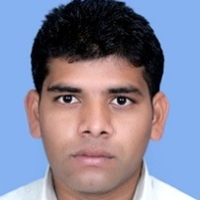
Narpat A. Singh
Work place: Department of CSE, CT Institute of Engineering Mgt & Technology, Punjab, India
E-mail: narpatsingh23@gmail.com
Website:
Research Interests: Image Compression, Image Manipulation, Image Processing
Biography
Narpat Singh has completed his four year bachelor degree of B.tech in computer Science and Engineering from Punjab Technical University, Jalandhar, Punjab, India in 2012. Currently, he is pursing two year master of M.Tech in computer Science and Engineering from Punjab Technical University, Jalandhar, Punjab, India. His specialization area is Digital Image Processing. He is certified with DB2, IBM RAD 6.0, IBM Web Sphere 6.2 and Awarded with IBM Blue Scholar. He is trying to research in Face Recognition for security purpose.
Author Articles
Face Recognition System based on SURF and LDA Technique
By Narpat A. Singh Manoj B. Kumar Manju C. Bala
DOI: https://doi.org/10.5815/ijisa.2016.02.02, Pub. Date: 8 Feb. 2016
In the past decade, Improve the quality in face recognition system is a challenge. It is a challenging problem and widely studied in the different type of imag-es to provide the best quality of faces in real life. These problems come due to illumination and pose effect due to light in gradient features. The improvement and optimization of human face recognition and detection is an important problem in the real life that can be handles to optimize the error rate, accuracy, peak signal to noise ratio, mean square error, and structural similarity Index. Now-a-days, there several methods are proposed to recognition face in different problem to optimize above parameters. There occur many invariant changes in hu-man faces due to the illumination and pose variations. In this paper we proposed a novel method in face recogni-tion to improve the quality parameters using speed up robust feature and linear discriminant analysis for opti-mize result. SURF is used for feature matching. In this paper, we use linear discriminant analysis for the edge dimensions reduction to live faces from our data-sets. The proposed method shows the better result as compare to the previous result on the basis of comparative analysis because our method show the better quality and better results in live images of face.
[...] Read more.Other Articles
Subscribe to receive issue release notifications and newsletters from MECS Press journals